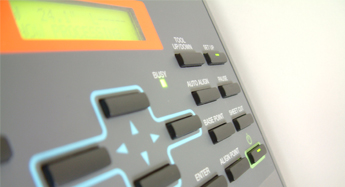Medical devices and 3D printing - update
June 2015
3D printing is an exciting technology that is developing rapidly in the area of life sciences. Take for instance the technology being offered by Organovo. Organovo recently agreed a partnership with L'Oreal USA to use its proprietary NovoGen Bioprinting Platform to develop 3D printed skin tissue for product evaluation and other areas of advanced research on skin by L'Oreal. 3D bioprinting enables the reproducible, automated creation of living human tissues that mimic the form and function of native tissues in the body. The technology also has adaptations to kidney and liver tissue.
Bioprinting is a sophisticated and proprietary technology. Other high performance, 'conventional' industrial 3D printing systems can cost anywhere between tens of thousands to hundreds of thousands of pounds. They are not therefore widely accessible. However, home desktop 3D printers are now becoming much more affordable. This opens up the possibility of home manufacturing for anyone who can afford one. And, while we wait for home printers to become more sophisticated, the public has increasing access to "copy shops" providing 3D printing services. Equally, there are plenty of online offerings. These printers are being used to print a huge array of 3D objects, from phone cases to prosthetics. The prospect is raised of the technology being used to make the whole of a simple medical device and/or spare parts for more complex ones.
With any form of manufacturing, there will always be the possibility that third party intellectual property rights are infringed. The difference now is that 3D printers make this so much easier by removing many of the overheads and logistical difficulties that go with traditional manufacturing processes, such as the need for a factory and transportation. Indeed, the challenges posed by 3D printing have been the focus of two studies by the UK Intellectual Property Office (see here and here).
With this relatively new form of cheap and accessible manufacturing, come two key threats for rightsholders:
- The use of 3D printing on a large scale has the potential to allow counterfeiters to manufacture goods in their home market thereby avoiding customs seizures.
- The ability for the public to produce their own articles, without purchasing them direct from retailers, aided by file-sharing sites whereby the public can download the computer aided design (CAD) files necessary for a printer to create a particular object.
So, what can be done by those who have invested in the design and development of medical devices to prevent copying by 3D printing? 3D objects can be protected by a variety of intellectual property rights, including patents, copyrights, trade marks and design rights.
 However, the advent of 3D printing also poses challenges for medical devices legislation. If simple, non-bespoke medical equipment can be manufactured using 3D printing and enter the supply chain, how does the ultimate consumer have the assurance that the material used to print it is suitable? What about the manufacture of spare parts? It is a concern for established manufacturers as well as consumers because of the potential safety threat posed to the latter and any association it might have with the genuine products?
However, the advent of 3D printing also poses challenges for medical devices legislation. If simple, non-bespoke medical equipment can be manufactured using 3D printing and enter the supply chain, how does the ultimate consumer have the assurance that the material used to print it is suitable? What about the manufacture of spare parts? It is a concern for established manufacturers as well as consumers because of the potential safety threat posed to the latter and any association it might have with the genuine products?
European medical devices law is currently being redrafted with the aim of introducing a new Medical Devices Regulation. One particular driver for the new regulation is a need that has been perceived for greater scrutiny of the supply chain for medical devices in order to improve safety. With this in mind, the Regulation is currently drafted to introduce a number of measures by which the authenticity of a device can be safeguarded. In particular:
- Improved traceability of devices in the supply chain in which each party in the supply chain of a medical device can identify who it is that supplied them and to whom they have supplied the device in turn.
- Manufacturers will be required to undertake a phased and risk-based introduction of Unique Device Identification (UDI).
- The requirement for manufacturers and authorised representatives to register themselves and the devices they put on the market in the Eudamed database.
If implemented successfully, these measures are intended to guard against medical devices of poor quality entering the supply chain. They have particular application to counterfeit products made with 3D printers because they provide customers and end users with the means to check that the goods are regulated at the point of purchase: if there is no source identified, no UDI or no registration, then consumers know to leave the product alone.
The new medical devices legislation is currently being discussed by the EU Council and will be subject to agreement with the EU Parliament. The amendments and the progress of the legislation can be tracked here.
If you have any questions on this article or would like to propose a subject to be addressed by Synapse please contact us.


Paul England
Paul is a senior associate and professional support lawyer in the Patents group based in our London office.
"The use of 3D printing on a large scale has the potential to allow counterfeiters to manufacture goods in their home market thereby avoiding customs seizures."

